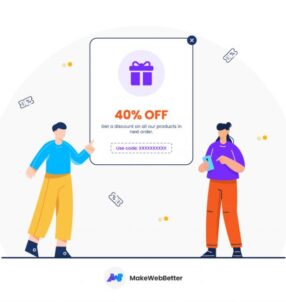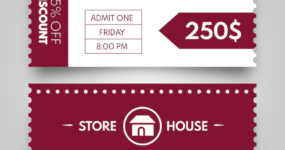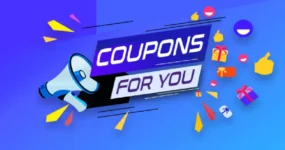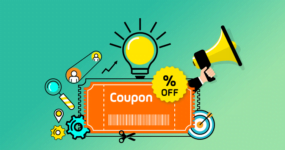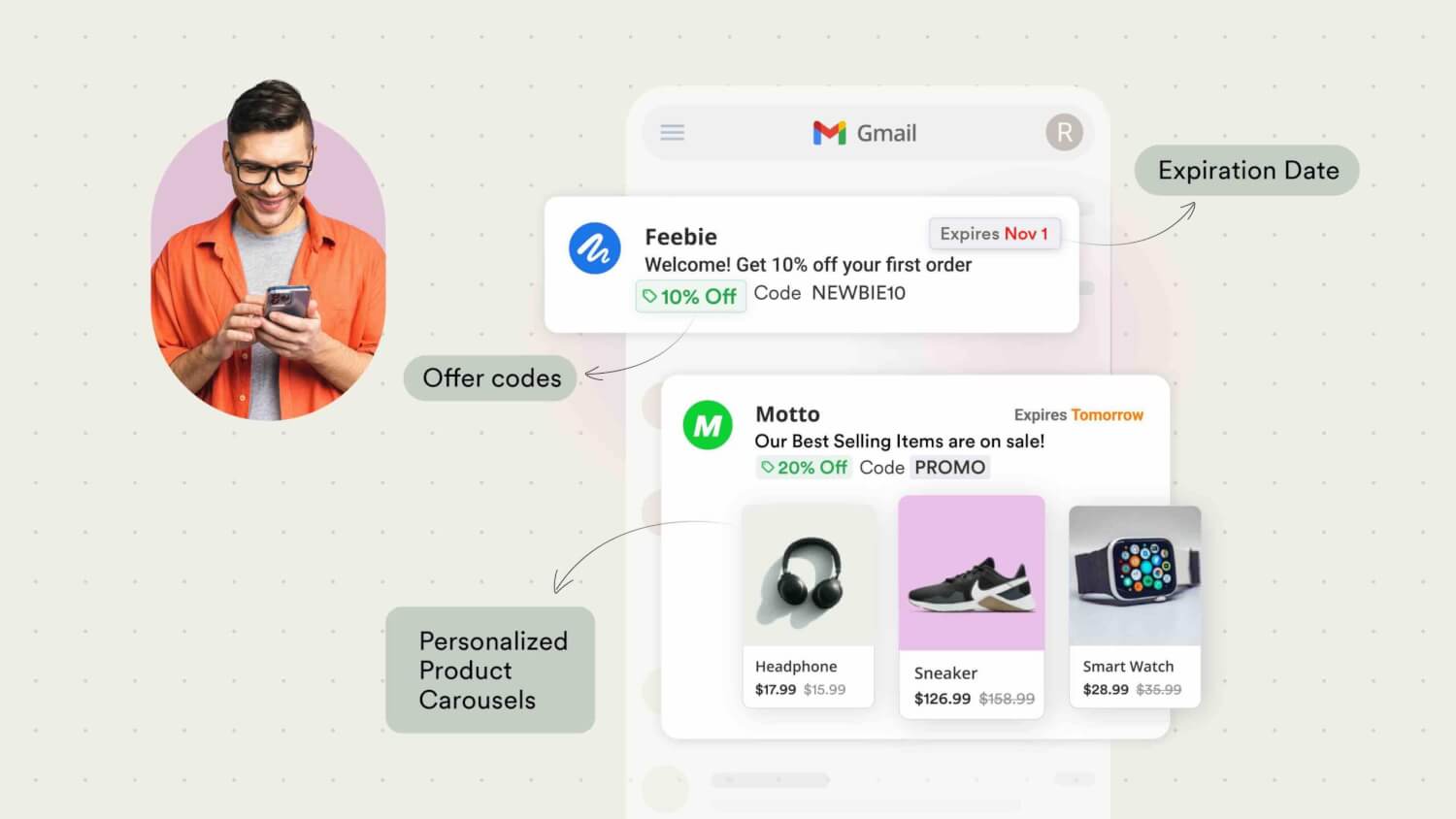
Here’s a fun fact! Coca-Cola is believed to have issued the first coupon in 1888 – a ticket for a complimentary glass of cola drink. They offered hand-written vouchers to the public, entitling them to a complimentary glass of Coca-Cola, then retailing at 5 cents. The objective was to get people to try the product, which worked perfectly. Over the years, brands have discovered the power of coupons and have used them in numerous ways to encourage customers to take desired action. Whether it’s reducing the friction in purchases, rewarding loyal customers, or reviving inactive customers, coupons have been a go-to tool for marketers.
Brands and their marketing campaigns predominantly relied heavily on generic promo codes that anyone could use, such as ‘BOGO’ or ‘FIRST10’. However, such campaigns fell short of delivering a personalized experience and were frequently prone to misuse and fraud. Brands started using unique coupons to address these issues. The reason behind the shift? There are a number of benefits to unique promo codes: Customers feel valued when they receive customized vouchers.
Unique codes reduce the risk of promo abuse
Tailored offers match customer needs better
Enable more detailed analysis of offer usage
evokes a sense of urgency, encouraging redemption right away. Given all these benefits, brands today prefer using unique, often single-use coupons to maximize returns and avoid misuse. However, since these codes are distributed on a 1-to-1 basis, they require pre-allocation to customers. Let’s look at how marketers manage coupon distribution today and the challenges they face.
Table of Contents
ToggleChallenges Brands Face Today
For brands to extend unique, single-use coupons, they first need to pre-assign these to all the customers. There are unique difficulties with this mechanism. Let’s have a look at what the journey of a marketer today typically looks like:
Create Coupons in the Promo Engine: Marketers utilize a coupon generation platform to create promo codes that adhere to specific business rules and requirements
Download Target Audience from the CEP: Marketers download the customer segment to be engaged from the Customer Engagement Platform (CEP)
Pre-Provision Coupons Offline and Upload to CEP: Marketers assign created promo codes to individual customers offline, typically in a CSV, and upload this file to the CEP to update customer profiles.
Marketers set up campaigns for customers, integrate the assigned vouchers, and trigger their distribution. Assigned coupons are then distributed to users.
The pre-assigning of coupons results in various pain points
Pre-assigning allocates promo codes to customers ahead of time based on the budget that is available, which results in inefficient use of the budget. However, not all customers redeem these, and since these cannot be extended to other eligible customers, many go unused. Underutilization of the budget as a result has a negative impact on marketing efforts’ profitability and return on investment (ROI). Delays in Reaching Newly Eligible Users: New customers who become eligible after the initial coupon distribution often miss out on offers due to the delay in promo code assignment.
Wasted Time and Effort in Coupon Assignment: It takes time to assign codes in advance and then reassign them later if they are not used. Coupon mismanagement: It can be time-consuming and error-prone to store pre-assigned promo codes as customer attributes. It makes analyzing redemption difficult, and if not appropriately updated, used codes might be triggered again, leading to a poor customer experience.
The challenges above clearly show that pre-assigning vouchers is not an appropriate solution. MoEngage Coupons comes into play because brands need to dynamically assign promo codes to customers who are eligible. MoEngage Coupons: An Effective Method for Providing Coupons MoEngage Coupons is a dynamic coupon provisioning solution designed to help brands allocate and distribute single-use coupons, maximizing customer engagement and optimizing costs.
It enables brands to:
Real-time allocation of unique, one-time coupons is efficient. Brands can randomly allocate unique single-use promo codes to eligible customers. With no pre-assignment required, these aren’t locked to customers and can be assigned flexibly in real-time. This approach reduces unnecessary promo code generation and unredeemed waste, reducing time spent assigning and reassigning them. As a result, brands can enhance their budget planning and utilization, maximizing returns.
Manage coupons from a single unified dashboard or using APIs
Brands can efficiently manage all their coupons from one place—ingest new coupon lists, edit existing ones, add new codes, or delete and archive with a single click.
Additionally, brands can monitor the status, expiry, total and available promo codes, and more for all the lists in one place, ensuring streamlined availability. Do you prefer using APIs? MoEngage provides this flexibility as well. Proactive alerts for coupon shortage, expiry, and ingestion status
Brands can get timely alerts over email for coupon shortages or upcoming expiries, ensuring no campaigns fail due to a lack of available coupons. They can also get notifications about where the coupon imports stand. Coupon Usage Report makes it possible to effectively audit The Coupon Usage Report can be downloaded by brands to see which customers received which promo codes. This enables brands to efficiently audit coupon usage in the future. How brands can use Coupons across industries
Brands can use MoEngage Coupons as an effective tool to distribute coupons and incentivize customers across various scenarios.
They can extend these to:
Reward their devoted clients. Acquire new customers
Boost repeat purchases
Bring the abandoned carts back. Make use of seasonal or one-time sales. Revivify inactive clients. Brands can leverage promo codes and vouchers to give a diverse range of benefits, not limited to:
Offering Discounts
Coupons can be used by brands to encourage purchases and increase spending: Percentage Off: Offer a discount on the total purchase price (e.g., 20% off).
Dollar Amount Off: Provide a fixed discount on the purchase (e.g., $10 off).
Free Shipping: Waive shipping fees on orders that exceed a specified value.
Unlocking Premium Content
Promo codes that grant access to exclusive content can delight customers for brands. They might grant access to exclusive features, webinars, or articles. Extending Free Upgrades
Brands can extend free upgrades to premium customers
Tier: Give customers access to more expensive membership levels. Service: Provide complimentary access to premium services for a limited time
Product: Provide free upgrades to the most recent models. The Business Impact Brands Can Drive
MoEngage Coupons offers an effective provisioning and distribution mechanism that enables brands to drive key business metrics, including:
Boost Sales: Offering personalized deals increases the likelihood of purchases, driving sales and revenue.
Customer Acquisition and CAC: Targeted offers can attract new customers, potentially lowering customer acquisition costs.
Increased Average Order Value (AOV) and Customer Lifetime Value (CLV): Promo codes can incentivize higher spending per transaction and promote repeat purchases, thus increasing both AOV and CLV.
Customer Loyalty and Retention: Personalized deals encourage repeat purchases, fostering long-term customer loyalty.
Enhanced Customer Experience: Unique random offer codes make customers feel special and valued, enhancing engagement and loyalty.
Increased Promotional Return on Investment (ROI): Unique promo codes enable businesses to manage distribution and utilization, preserving the budget for discounts while maximizing effectiveness.
Final Thoughts
Coupons can be a powerful tool for guiding customer behavior and deepening their relationship with your brand, as demonstrated by their impact on key business metrics. MoEngage Coupons simplifies the allocation and distribution of coupons to eligible customers, boosting engagement and returns while minimizing managing these.

